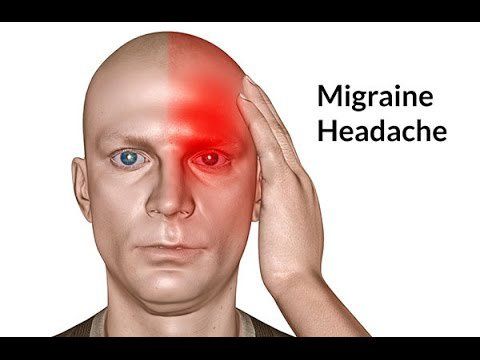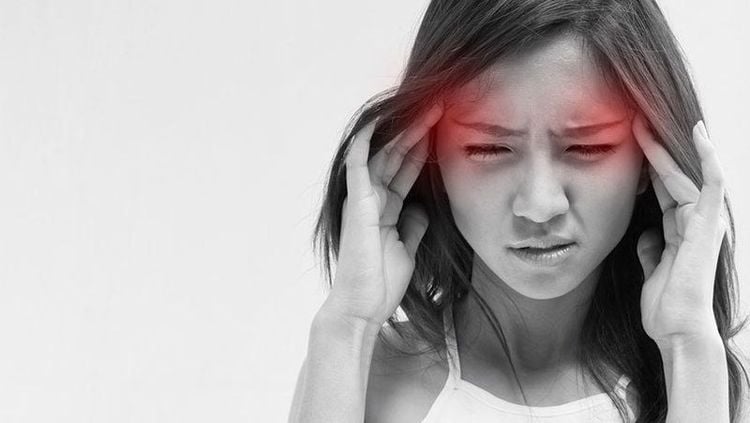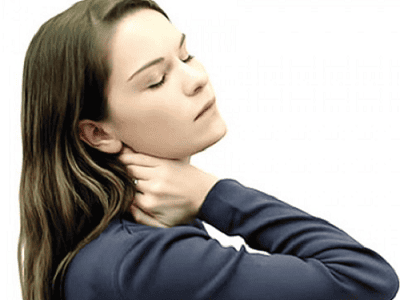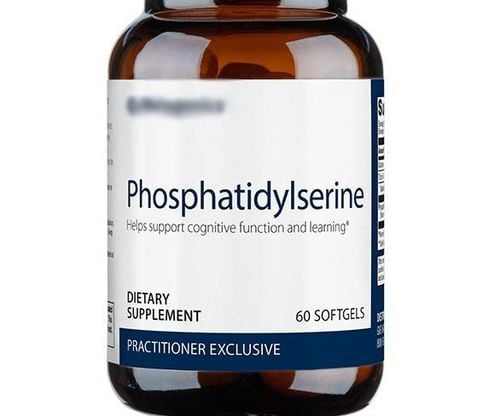This is an automatically translated article.
Headache is a very common and very common symptom. There are many causes of headaches and are classified into many different types of headaches, headaches or facial pain due to diseases of the skull, neck, eyes, ears, nose, sinuses, teeth, mouth, or skull or facial structures other due to musculoskeletal and mental diseases.
1. Causes of headache diseases
Headache due to neurological diseases
Traumatic brain injury. Meningitis, cerebrovascular disease. Syndrome of increased intracranial pressure. Migraine headache. Dysfunction. Due to systemic disease
Acute systemic infection. Poisoned. Heatstroke, sunstroke. Due to medical disease
Cardiovascular disease. Digestive disease. Digestive kidney disease. Anemia. Endocrine disorders. Due to other specialized diseases
Eye. Ear, nose and throat. Etiology in extracranial and craniofacial software
Osteoarthritis, Paget's disease of bone. Cancer metastasis to the skull. Cervical spine deformity. Nerved' Arnold neuralgia due to cervical spondylosis. Cervical spinal disc herniation. Temporal artery disease also known as Horton's disease
2. International Headache Society (IHS) Headache Classification
2.1 Migraine headache (also known as migraine)

Chứng đau nửa đầu
Migraine without aura : Migraine headache without warning symptoms. Migraine with aura symptoms include: Typical aura symptoms followed by headache. Typical aura followed by no headache. Migraine headache with hemiplegia. Basal migraine headache (with brainstem symptoms). Childhood cyclical syndromes, which later become migraines, such as cyclic vomiting, migraine, and benign paroxysmal vertigo. Retinal migraine for visual symptoms. Complications of Migraine : Chronic Migraine. Migraine state (severe, persistent migraine headache; accompanying symptoms such as vomiting, dizziness, vegetative disorder, mental panic; severe occurrence). Persistent aura without infarction. Migraine Infarction. Seizures due to Migraine. Migraine monitoring when the diagnosis of migraine is uncertain.
2.2 Tension-type headaches Infrequent cyclical tension-type headaches with or without pericranial increased sensitivity. Frequent cyclical tension-type headache with or without pericranial sensitization. Tension-type headache is characterized by or without pericranial increased sensitivity. 2.3 Cluster headaches and neuralgia V Cluster headaches: Cyclical, or chronic, cluster headaches. Periodic or episodic paroxysmal migraine. Brief neurogenic headache with conjunctival congestion and lacrimation (SUNCT). 2.4 Other primary headaches Primary stabbing headaches. Primary headache due to cough. Primary headache caused by exertion. Primary sex-related headache. Headache from sleep. Primary "thunderclap" headache. Constant migraine pain. Daily persistent headache.

Đau đầu dai dẳng hàng ngày
2.5 Headache from head and neck trauma Acute post-traumatic headache: Due to moderate to severe head trauma, due to minor head trauma. Chronic Post-Traumatic Headache: Due to moderate to severe head trauma, mild head trauma. Headache due to inertial injury (whiplash injury). Chronic headache caused by whiplash injury. Headache due to intracranial hematoma after trauma: Headache due to epidural, subdural hematoma. Headache due to other head and/or neck trauma. Headache (acute and chronic) after craniotomy. 2.6 Headache due to cervical or cranial vascular disease Headache caused by ischemic stroke or TIA. Headache due to non-traumatic intracranial bleeding: Due to bleeding in the brain or subarachnoid hemorrhage. Headache due to vascular malformation (non-ruptured): Due to aneurysm, due to arteriovenous malformation, arteriovenous shunt, cavernous hemangioma, and multiple angiomas (angiomatosis). Arteritis headache: Giant cell arteritis, primary or secondary CNS arteritis. Vertebral or carotid artery pain: Due to artery dissection, after arterial surgery, after angioplasty, due to intracranial endovascular intervention, after angiography. Headache due to cerebral venous thrombosis. Headaches due to other intracranial vascular diseases: CADASIL, mitochondrial encephalopathy, lactic acidosis and stroke-like episodes, due to CNS benign vascular disease, due to pituitary stroke. 2.7 Headache due to intracranial diseases not vascular etiology Headache due to increased CSF pressure: Due to increased intracranial pressure, metabolic, toxic, hormonal, hydrocephalus. Headache due to decrease in CSF pressure: After dural puncture, CSF leak, due to spontaneous decrease in CSF pressure. Headache caused by aseptic inflammation: due to neurosarcoidose, meningitis, pituitary lymphadenitis. Headache due to intracranial neoplasia: intracranial hypertension or hydrocephalus due to neoplasia, headache due to direct neoplasia, meningitis, systemic metastases, increased or decreased secretion of pituitary or hypothalamus . Headache caused by injection into the cerebrospinal fluid space. Epilepsy headache: Epileptic headache, post-epileptic headache. Headache due to occipital-neck malformation (Chiari type) I. Transient headache syndromes and neurological deficits with CSF lymphocytosis. Headache due to non-vascular intracranial diseases 2.8 Chemical headache, chemical withdrawal Acute chemical exposure or use headache: Due to nitric oxide (NO)-forming substances, phosphodiesterase inhibitors, caused by carbonmonoxide, by alcohol, by food and spices, by monosodium glutamate, by cocaine, by cannabis, by histamine, by calcitonin-gene related peptides, by drug side effects, by use or exposure other acute chemical contamination. Drug abuse headache: Due to abuse of ergotamine, tryptan, analgesics, opioids, abuse of drug combinations, abuse of other drugs. Headache is a side effect of chronic drug use: due to the use of foreign hormones. Chemical withdrawal headache: Due to caffeine withdrawal, opioid withdrawal, oestrogen withdrawal, withdrawal from other chemicals 2.9 Infectious headache Intracranial bacterial headache: Meningitis, inflammation brain, brain abscess, due to subdural pus. Headache due to systemic infection: Due to bacterial infection, systemic virus; other systemic infections. Headache caused by HIV/AIDS infection. Chronic headache after infection: Chronic headache after bacterial meningitis. 2.10 Headache due to endothelial disease Headache due to lack of oxygen and/or increased CO2: Due to altitude, diver headache, due to asphyxiation during sleep.

Đau đầu do thiếu oxy và hoặc tăng CO2
Headache due to hemodialysis. Headache due to arterial hypertension: Due to pheochromocytoma, due to hypertensive crisis, due to hypertensive encephalopathy, due to preeclampsia, eclampsia, due to acute vasoconstrictor response to foreign substances. Headache due to hypothyroidism. Headache due to fasting. Cardiac headache. Headache due to other endothelial diseases. Headache or facial pain due to diseases of the skull, neck, eyes, ears, nose, sinuses, teeth, mouth, or other cranial structures:
Headache due to cranial bone disease. Neck pain: Neck pain, retropharyngeal tendonitis, and dystonia of the skull and neck. Eye disease headache: Acute glaucoma, refractive error, latent strabismus or dystrophy, ocular inflammatory diseases. Headache due to ear diseases. Headache due to inflammation of the nasal sinuses. Headaches caused by diseases of the teeth, jaws, and other related structures. Headache or facial pain due to temporomandibular joint disease. Headache caused by diseases of the skull, neck, eyes, ears, nose, sinuses, teeth, mouth, or other facial structures. 2.11 Headaches due to mental illnesses Headaches due to mental illnesses. Headache due to mental illness. 2.12 Cranial and facial pain of central causes Trigeminal neuralgia: Classical, symptomatic. Glossopharyngeal neuralgia: Classical, symptoms, accessory VII nerve, superior pharyngeal nerve. Nasociliary neuralgia. Nerve pain above the pit. Pain in other nerve endings. Occipital neuralgia. Tongue neck syndrome. Headache caused by pressure from the outside. Cold-induced headache: Due to cold stimuli from outside, from eating or smelling cold. Persistent headache due to compression, irritation, or torsion of cranial nerves or superior cervical roots due to structural damage. Optic neuritis. Diabetic oculomotor neuropathy. Herpes headache or face: due to acute Herpes, or after Herpes. Tolosa-Hunt syndrome. Migraine ophthalmic paralysis. Central causes of facial pain: pain insensitivity, post-stroke, multiple sclerosis, persistent idiopathic, burning pain in the mouth. Other central cranial nerve and facial pain. Other headaches, cranial nerve pain and other central or primary facial pain
Headache not elsewhere classified. Non-specific headache. At Vinmec Times City International Hospital, the internal neurology department belongs to the clinical medicine division, holding specialized functions in the examination and treatment of diseases related to the central nervous system including: the brain, blood vessels, meninges, nerves in the skull, pituitary gland, spine, discs, membranes of the spinal cord, and the peripheral nervous system (nerves and ganglia outside the brain and spinal cord). living).
Together with a team of leading specialist doctors in the country, not only good in expertise but also rich in many years of experience and modern equipment and advanced facilities.
Please dial HOTLINE for more information or register for an appointment HERE. Download MyVinmec app to make appointments faster and to manage your bookings easily.













